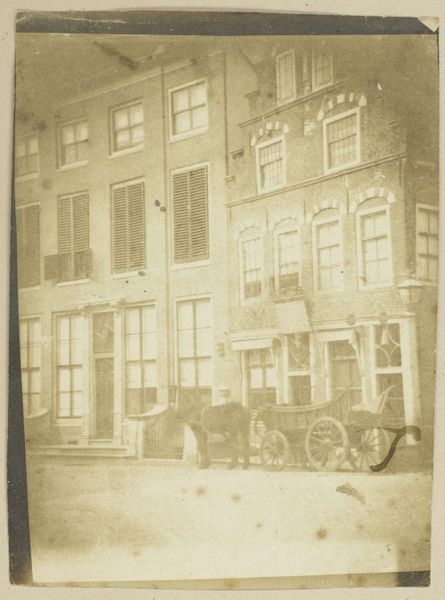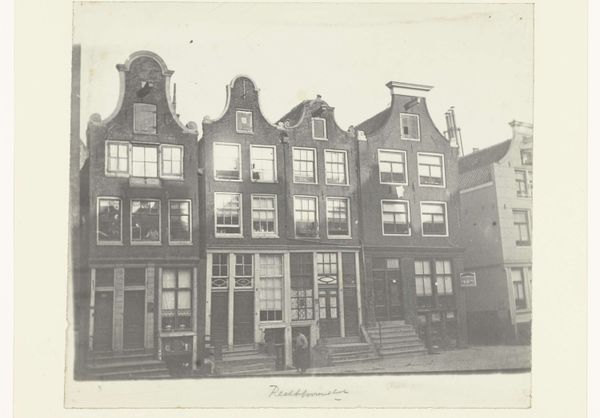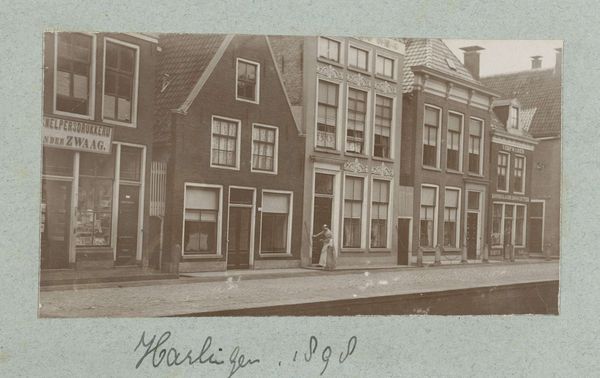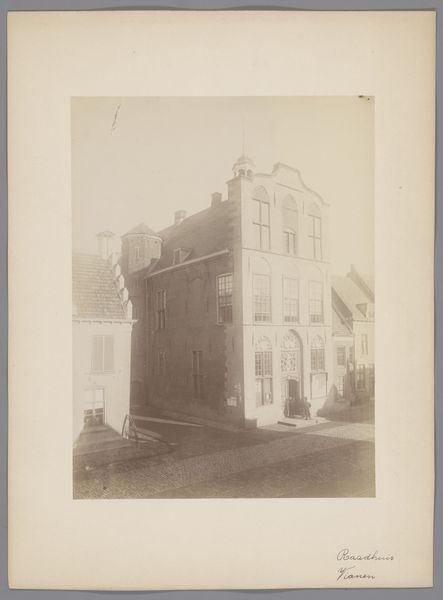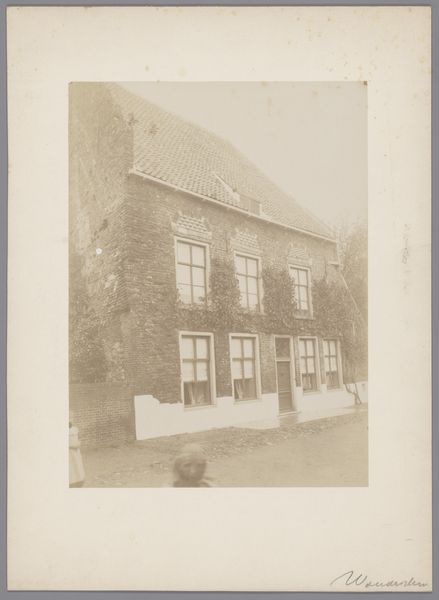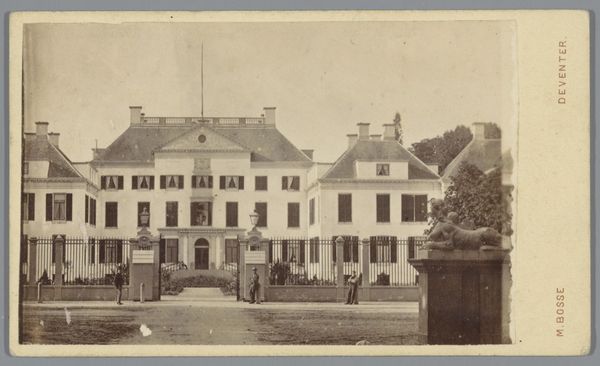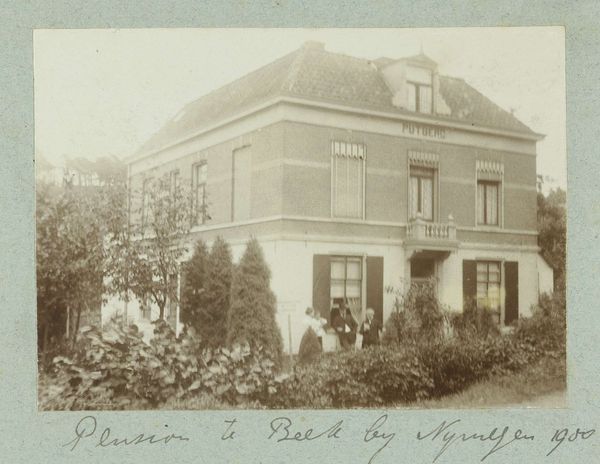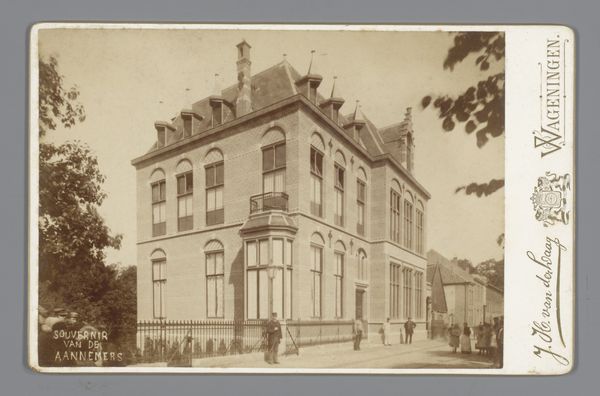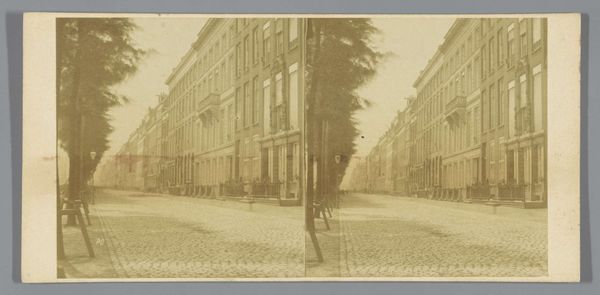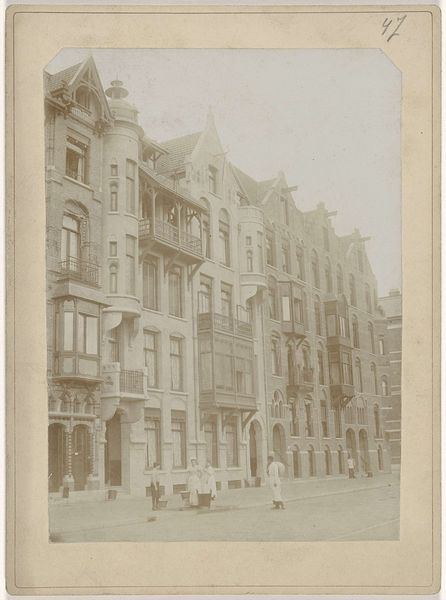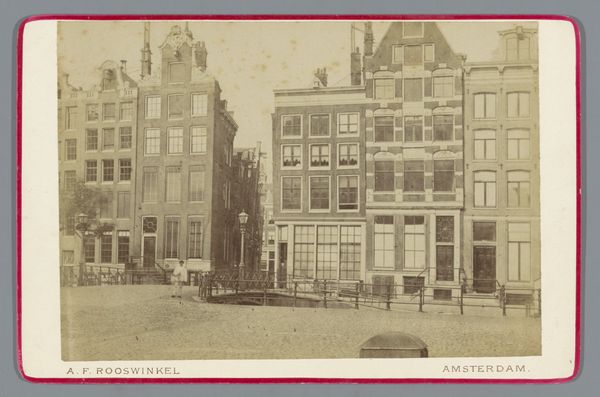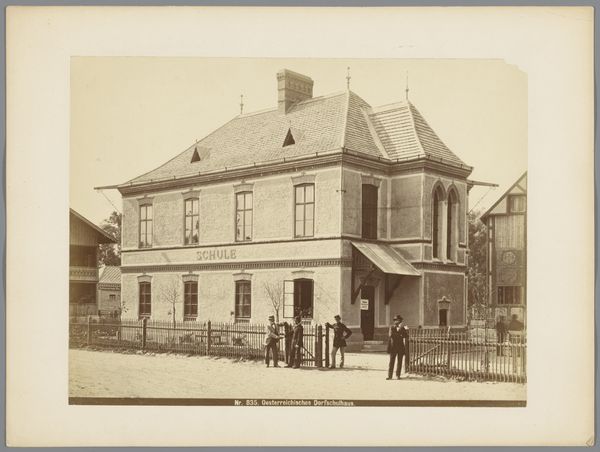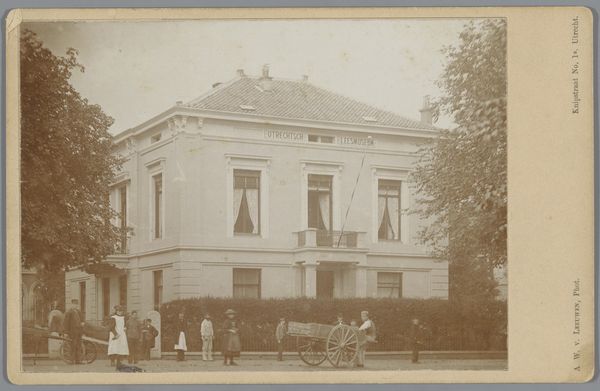
photography
#
dutch-golden-age
#
photography
#
cityscape
#
realism
Dimensions: height 122 mm, width 157 mm, height 302 mm, width 250 mm
Copyright: Rijks Museum: Open Domain
Curator: This photographic print shows us "Huis Beek en Royen in Zeist," captured in 1888 by Henry Pauw van Wieldrecht. Editor: The mood feels wonderfully staged and curiously mundane at the same time, like a still from some lost play. It looks utterly of its time but, if I am honest, it doesn't shout inspiration, more documentation. Curator: That’s fair. Its documentary quality stems from van Wieldrecht’s wealth and status in the region and we should consider the societal forces. These new technologies gave the middle classes the opportunity to visually depict their success, power, and role. Editor: I get that. But it is all a bit rigid, isn't it? It makes me wonder what’s going on inside, behind those windows. It’s hard to ignore those children watching from above. Curator: Precisely. Notice also how it employs an aesthetic language that is clearly informed by 17th-century Dutch Golden Age painting—the even light, the detailed brickwork, the rather calm overall feel. The photographer is referencing social precedents to demonstrate his sitter’s connection to those periods. Editor: I find that incredibly fascinating; it shows how artistic forms get appropriated and become social currency. Although there is very little shadow, the dark shutters work as visual accents for my eye and I am left contemplating the figures along the sidewalk. It definitely begs a narrative interpretation. Curator: That it does. By appreciating such images, we get a glimpse into how the emerging middle classes tried to position themselves within a specific Dutch narrative of wealth and success. The camera wasn’t merely documenting, but constructing social standing. Editor: I came in cynical, and now, seeing this work's position, it suddenly opens up avenues for discussion, it moves from a rigid facade, like the building, to a fluid cultural image that now I can better understand. Thank you. Curator: The pleasure was mine. Thank you for humanizing my historical considerations.
Comments
No comments
Be the first to comment and join the conversation on the ultimate creative platform.
